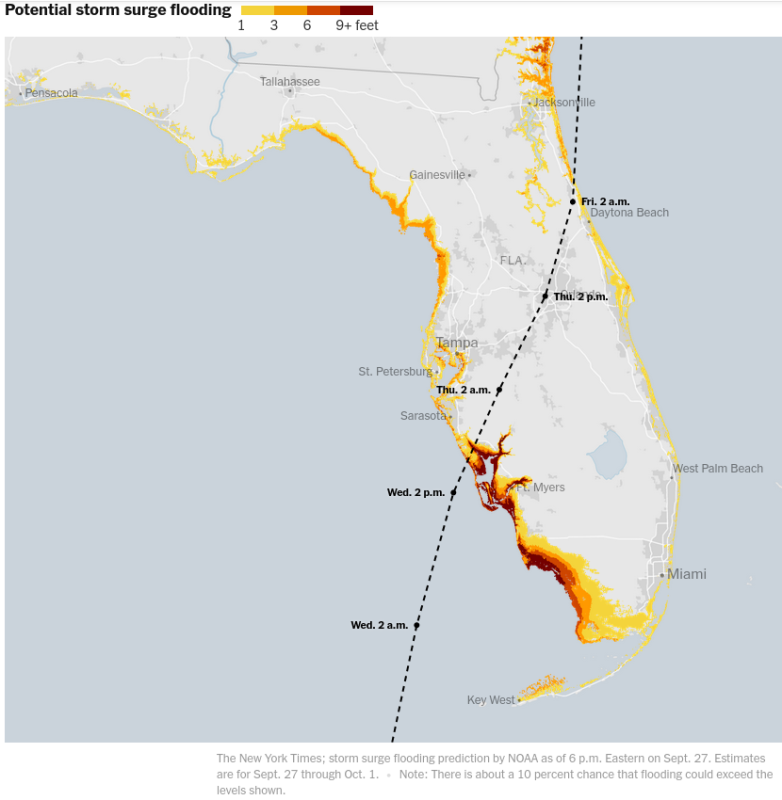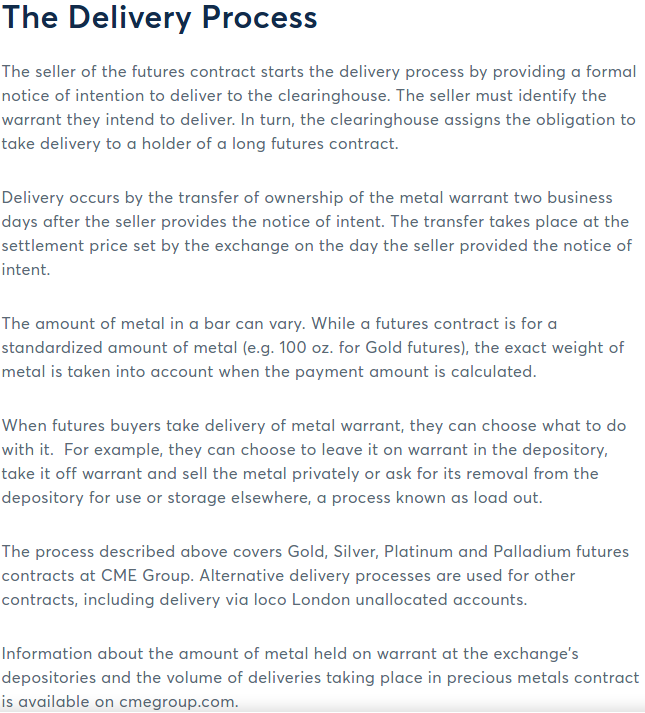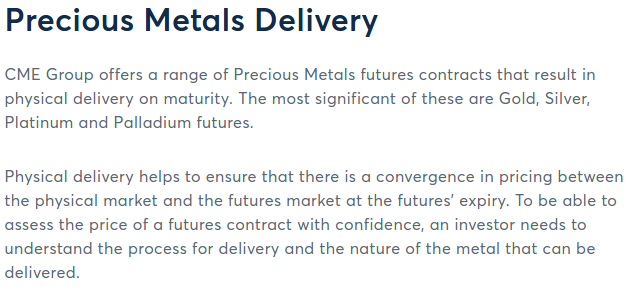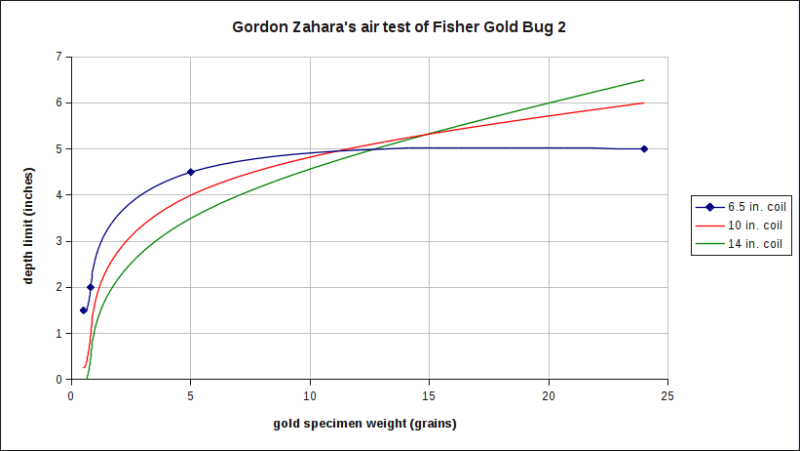-
Posts
5,808 -
Joined
-
Last visited
Content Type
Forums
Detector Prospector Home
Detector Database
Downloads
Everything posted by GB_Amateur
-
IMO, that sounds like an excellent idea and well worth your effort. The big plus with such controlled tests is just that -- you are in control of the target types, orientations, and locations. The big minus (but only for those who fail to realize this) is that it's not a perfect proxy for what happens in the field. Many factors, such as soil compaction, soil moisture, and the unknown 3-dimensional location effects of multiple targets in view cannot be duplicated. Add to that the fact that you know exactly where the test garden target is and you can keep trying until (unless too deep) you get a signal. In the wild you are flying blind and a deep but detectable target can be missed if you don't get the coil's sweetspot (typically coil center) directly over it.
- 25 replies
-
- xp deus 2
- minelab equinox
-
(and 1 more)
Tagged with:
-
Well, the decision has been made by forum member Highland, and I doubt there was a wrong choice. Congratulations. But I will answer directly a question (and implication) about the Manticore, both generally and specifically: 1) No one except a few (potentially biased) insiders has really given this as-yet-to-be released detector a good workout. As such we don't really know about its actual performance until it gets released and lots of people (in lots of different environments!) get a chance to work with it. 2) Minelab caught (and continues to catch) considerable grief for some shortcomings of the strength of the Equinox. In particular the leaking control pod was a big one. If they haven't remedied that for the Manticore there is going to be hell to pay, not just from users but from their stockholders. If they are halfway smart (and everyone gives them at least that much credit 😏), the problems with the Equinox will not be present on the Manticore. From the videos with engineer Mark Lawrie, it's been said multiple times that the leaking issues, coil ear problems, and uncomfortable grip have been addressed & remedied with the Manticore. 3) (This point may be controversial and worse, overstated. So I'll emphasize it is just my opinion.) Don't trust side-by-side comparison videos for performance. Even if the bias is unintentional, there will be bias. The soil's ferrous-mineralization/salt/moisture are all biases. The detector settings are a bias. The targets are a bias. The density of trash is a bias. The coils are a bias. And in most cases the person doing the video is not equally expert with both (or multiple) detectors. It's an impossible task. Everyone has their preferences/likes/dislikes and only the individual end user can figure out what's best for him/her. Worst is when someone has a favorite and/or one he doesn't like, or even other detectorists he doesn't like and gets a thrill from trashing that person's detector. (This last part will remind some here of a comparison video creator or two. 😄)
- 25 replies
-
- xp deus 2
- minelab equinox
-
(and 1 more)
Tagged with:
-
Mitchel, you should check this database -- could be from the D. B. Cooper hijacking. Maybe he got closer to Mexico than the FBI thought.... 🤔
-

Seated Liberty Quarter 1838
GB_Amateur replied to Troy E's topic in Metal Detecting For Coins & Relics
Great find! Condition looks to be Extremely Fine, except for that obverse ding around 3-4 O'Clock. This appears to be a strongly struck coin. First year of that design. You may never again find another one with condition this nice, but I hope you do. I doubt they intentionally passed over this. More likely they just didn't get the coil over it. Either that or it was masked or on edge and they didn't get a good signal for one of those reasons. Regardless, their loss is your gain. 😄 -
Here's a photo, from left to right: two Indian Head Cents, the 1917 Canadian Large Cent, a modern brass USA dollar, and a 25% Ni, 75% Cu (surface layer alloy composition) clad Kennedy half dollar. The (removed) tree that the cent was found under may have had additional deleterious effects on the coin, more than just the typical local soil. The surface of that coin would serve as a pretty good fingernail file. 😏
-
There have been some good replies on this thread but I think in some cases this last point "who got there before you" has been understated or ignored. In my parks the ML (Simultaneous Multi-Frequency) Equinox in MF mode is a better performer for the deeper (say 4" and greater) coins than any of my single frequency detectors (or the Eqx in single frequency), and it matters. The previous detectorists (most but maybe not all with single frequency detectors) have swept up most of the low hanging fruit. A good single frequency detector in my soils will also pick up a deeper target, but the problem is it typically gives an iron signal. I think eventually the Eqx's Multi-IQ will lose out, too, but there is a range of depths where it still gives reasonably accurate dTID's after the single frequency performers have lost that. It's worth emphasizing that I say 'my parks'. They have moderate mineralization but the effect is noticeable. In clean, dry beach sand or ground with low mineralization the advantage of multifrequency over single frequency is diminished, as others have pointed out. In my moderately (ferromagnetic) mineralized ground it definitely makes a difference.
-
Since you dig Canadian coins, here's a datapoint for you, and a question. I have a mid-teens Canadian large cent which I found in an old schoolyard near where a large tree had been removed. (I've noticed that the chemicals in some decaying tree leaves can be really hard on some coins, particularly our 25% Ni, 75% Cu coins -- our 5 cent pieces and clad.) This large cent has a lot of crusty buildup, seemingly worse than our Lincoln cents of the same time period. Do you know the composition of those 19-teens large cents?
-
I'm sure I've dug plenty of those, whichever ones they are. The later(?) small pulltabs, both with and without the rivet, read in the nickel zone even with the beavertail attached. The early larger ones are above that. When the beavertail is alone and rolled up, it does show up in the nickel zone though. When flat it seems to read nickel in the short direction but higher (14) in the long direction. And most modern ('racetrack') tabs, when not broken or bent, read 14 for me also. The 'popouts' -- part of the lid of the modern cans that is pushed out of the way by the tab when opening -- is also in the nickel zone. Why someone went to all the trouble to remove that, unless it was to annoy us detectorists, has me baffled. All of the above experience for me is in Park 1 (or Field 1) with recovery speeds of 5 or 4. Park 2 and Field 2 with recovery speeds 6 or higher will usually give a tell on the beaver-only tabs, with a lot of 11's mixed in. But I only use that for stronger signals. With depth the dTID's spread out more and it's unreliable to use that trick. Many of my Buffies show quite a bit of 11 mixed with 12& (usually) 13 in the Park 1 and Field 1, slower recovery settings. The faster settings I use in Park 2 and Field 2 are even worse at distinguishing between nickels and beavertails, for me in my soil, anyway.
-

A 1200 Years Old Silver Found With The Deus2
GB_Amateur replied to palzynski's topic in XP Deus II Forum
I get excited with a 120 year old coin and you find one 10 times as old. Heck, your consolation prize is over 400 years old.... Great work! -

Turf Hunt Before The Hurricane--rewarded
GB_Amateur replied to Againstmywill's topic in Metal Detecting For Coins & Relics
Nice photos. Got the following map off NYTimes: Does storm surge predict recovery of long buried valuables for detectorists? -

Video Of Nasa Dart Impacting An Asteroid
GB_Amateur replied to jasong's topic in Metal Detecting For Meteorites
You're off-scale by about 2 or 3 orders orders of magnitude, phrunt, depending upon what worries you. For example according to Wikipedia, Waco, Texas is the 22nd largest city in that state, by population. The meteoroid that wiped out the dinosaurs and 75% of plant and animals species on the earth at that time (66 million years ago) is estimated at (only?) 10 km in diameter -- about the size of Waco. From Wikipedia: With the exception of some ectothermic species such as sea turtles and crocodilians, no tetrapods weighing more than 25 kilograms (55 pounds) survived. (Damn crocs -- what does it take??) -

Video Of Nasa Dart Impacting An Asteroid
GB_Amateur replied to jasong's topic in Metal Detecting For Meteorites
To put this (natural, asteroid) satellite's size in perspective, here are some estimated diameters of meteoroids (pre-breakup) from known events: Chelyabinsk, Russia (2013): 20 m. Barringer Crater, Arizona, USA (50,000 years ago): 50 m. Tunguska, Russia (1908): 65 m. [ Dimorphos: 170 m. ] Chicxulub, Mexico (66 million years ago): 10,000 m. I think these estimated sizes assume all are asteroids. Although some have been hypothesized as comets (which would have considerably lower densities and thus larger diameters for fixed mass), I don't think those hypotheses have stood up, or at least aren't currently matching the best evidence. -
I'm starting to think the Minelab crew is on an extended vacation. But I looked up Chazy, NY and it's a stone's throw from Montreal. They probably heard how beautiful the Fall leaves are in that area but didn't realize that season there is over at the end of September! (Don't forget to bring the snow gear, ML. OK, I'm exaggerating a bit. 😉)
-

Arizona Outback And Finders Forums Gone?
GB_Amateur replied to Steve Herschbach's topic in Detector Prospector Forum
That appeared to be tongue-in-cheek sarcasm. Whenever Klunker posts, get your spoof antennas airborne. -

Manticore Goldfields Mode Discussion
GB_Amateur replied to afreakofnature's topic in Minelab Manticore Forum
Do the ML Equinox gold modes work on the (dry) ocean beaches? That may have been his motivation -- to be sensitive to the small chain links. -

Grand Rapids Michigan Glacier Gold
GB_Amateur replied to Lozuki's topic in Gold Panning, Sluicing, Dredging, Drywashing, Etc
Have you contacted the Gold Prospectors Association of America (GPAA)? Here is a link to their Michigan chapter webpage. -
So there are multiple Manticore units out and available for making videos?
-
No. Bluetooth and proprietary wireless are two different, unrelated channels.
-
In your last photo (shows up better in that one), above the variable capacitor(?) on the left edge there is an integrated circuit(?). To the right of it is an empty socket. There is another one on this circuit board as well which I don't see in the photos. The Sierra Pulse Pro (SPP), also called the Sierra Super Pulse (SSP), also called the GMT Super pulse, doesn't have either the conductivity switch nor the pulse delay adjustment pot that's on the SL model. That is why those two sockets are empty. AFAIK (others here are more knowledgeable), the circuit board itself is the same. BTW, you will notice in your first photo that the detector nameplate is a paper stick-on label. If you peel that off, the chassis box has the GMT Super Pulse name decal, an address and company in the United Arab Emerites (UAE), etc. This detector was intended exclusively for the African market but failed to catch on there. Jimmy Sierra bought out Whites's inventory, overlayed the new name, and sold them excusively in the Western USA.
-
You and that Tesoro really speak the same language. Nice ring! By 'big coil' are you referring to the 10"x12"?
-

Gold Price Expected To Rise Significantly Soon
GB_Amateur replied to Aureous's topic in Detector Prospector Forum
Here is where I looked before I posted. On rereading that, it does appear that "physical delivery" and "ensure that there is a convergence in pricing between the physical market and the futures market at expiry" is fancy wording with the devil in the details. Thanks for going into the weeds with your explanation. Another example of "a little knowledge is a dangerous thing?" 🤔 -
Here in Southern Indiana it hasn't been nearly as hot as many of you have been dealing with, but this is the driest summer I've expereinced since getting back into detecting in late 2015. I've hardly been out in the last 2 1/2 months. The few times I've gotten out I've taken jugs of water to wet the plugs after recovery, but I don't know how well that works when the ground is already so dry and no rain comes along within a few days to help out. The weather finally broke today and the predictions are ~70F (~21 C) highs and ~50 F (10 C) lows for the next 10 days -- perfect Autumn temps + low humidity. But no rain in the forecast... 😞
-
There are some air test data in the following report on the Gold Bug 2 with three different coils. I plotted those data (except the 1 ozt row) and did some curve fitting: You can see in the 12-14 grain range that the three coils give about the same 'depth' (in air, not ground) and that for lighter nuggets, smallest coil is best and above that range, the largest coil is best. (Note: about 15 grains equals 1 gram).
-

Some Of My First Finds In Northern Canada.
GB_Amateur replied to fogrider's topic in Metal Detecting For Coins & Relics
Didn't he say it was "on edge"? Big difference there, at least with the Equinox. And then there's the ground mineralization issue which should always taken into consideration. Welcome, fogrider! Nice finds, including the 1980's Garrett. Often batteries get left in those closet queens (for years) and the acid eats away the terminals. Does that model have self adjusting threshold (SAT)? I have a late 70's Garrett Groundhog and it has to be retuned every minute or so -- very annoying now that I'm spoiled with modern detetors. Still deep, though, in all metal mode that is.





